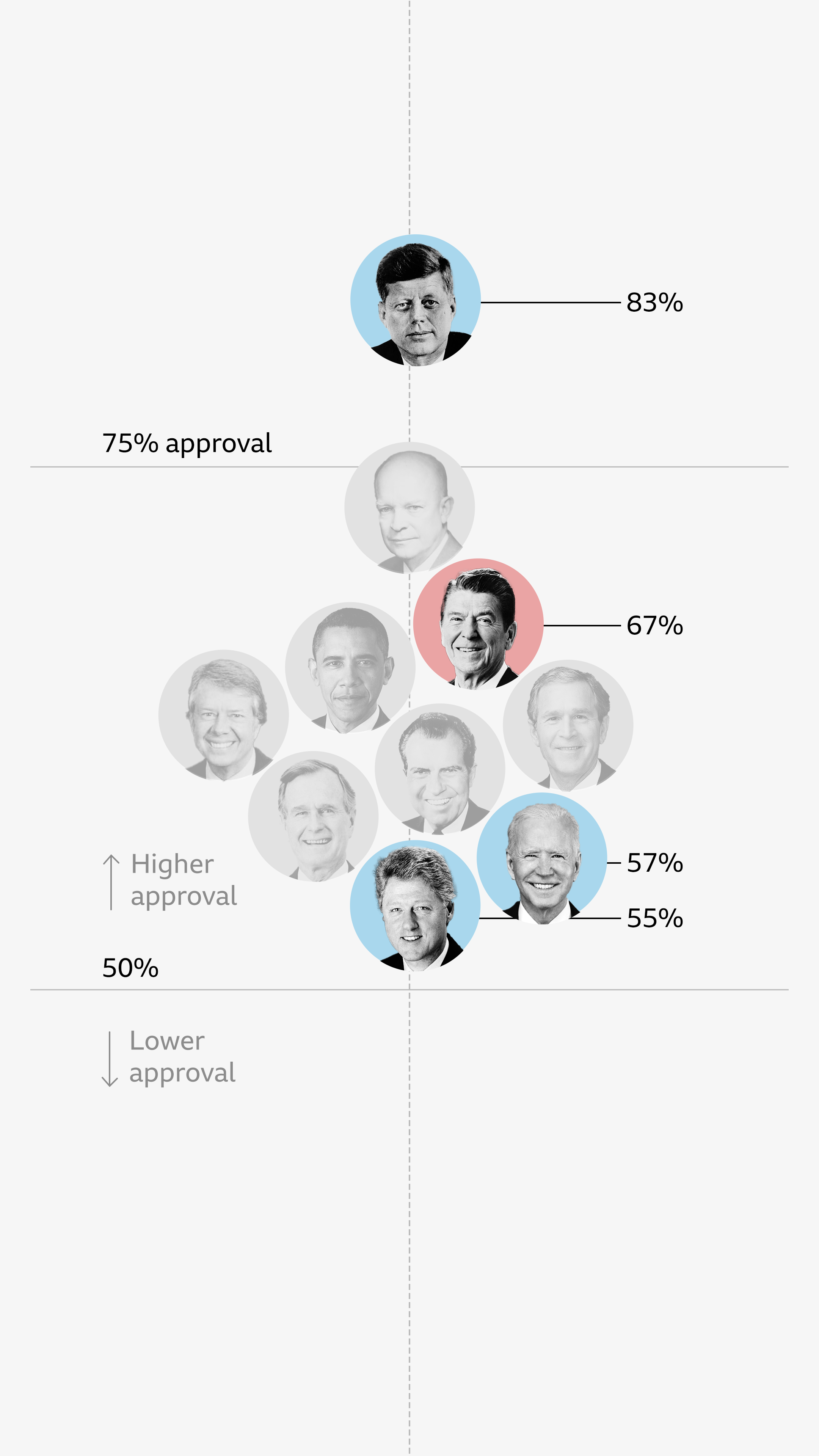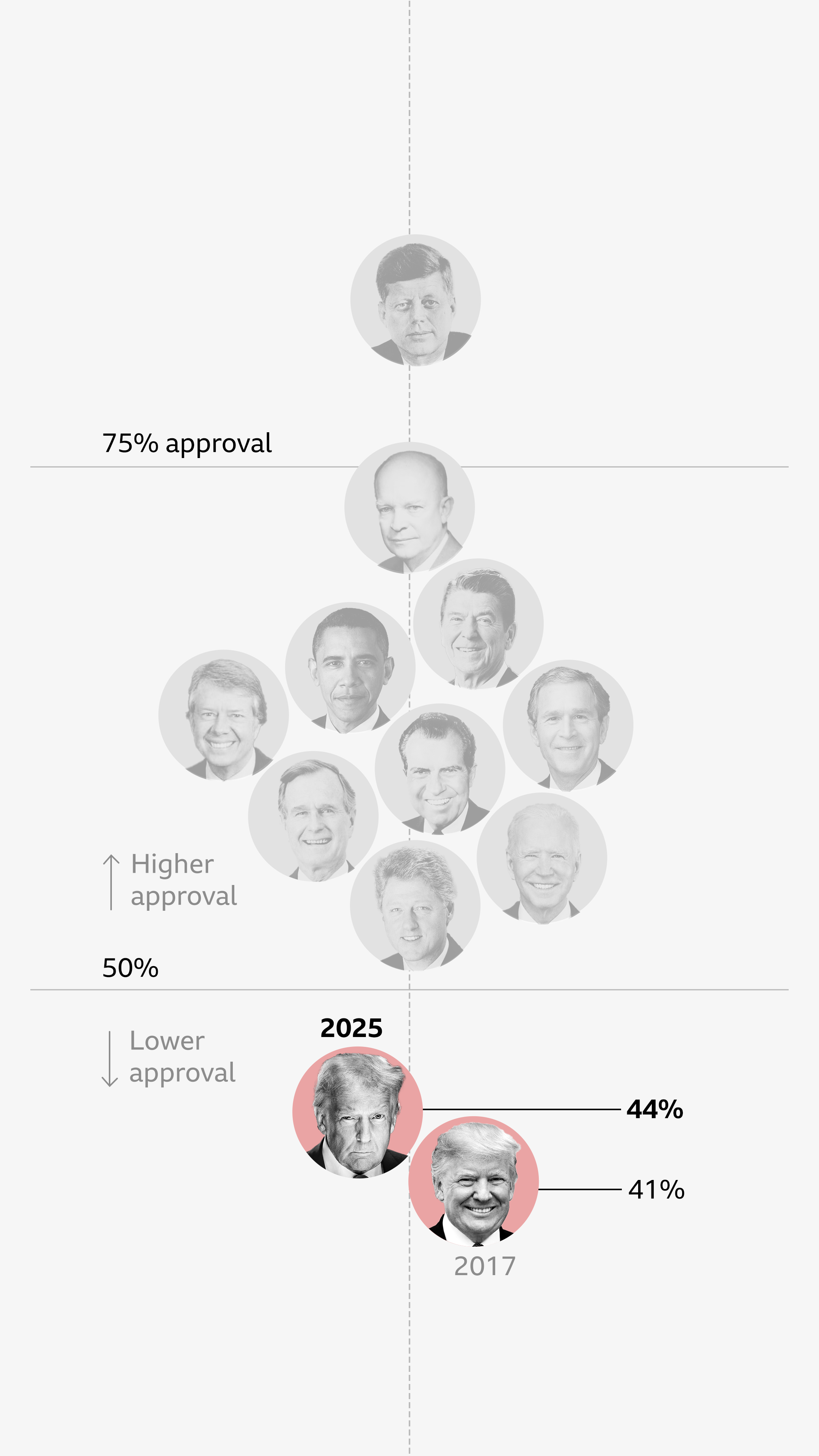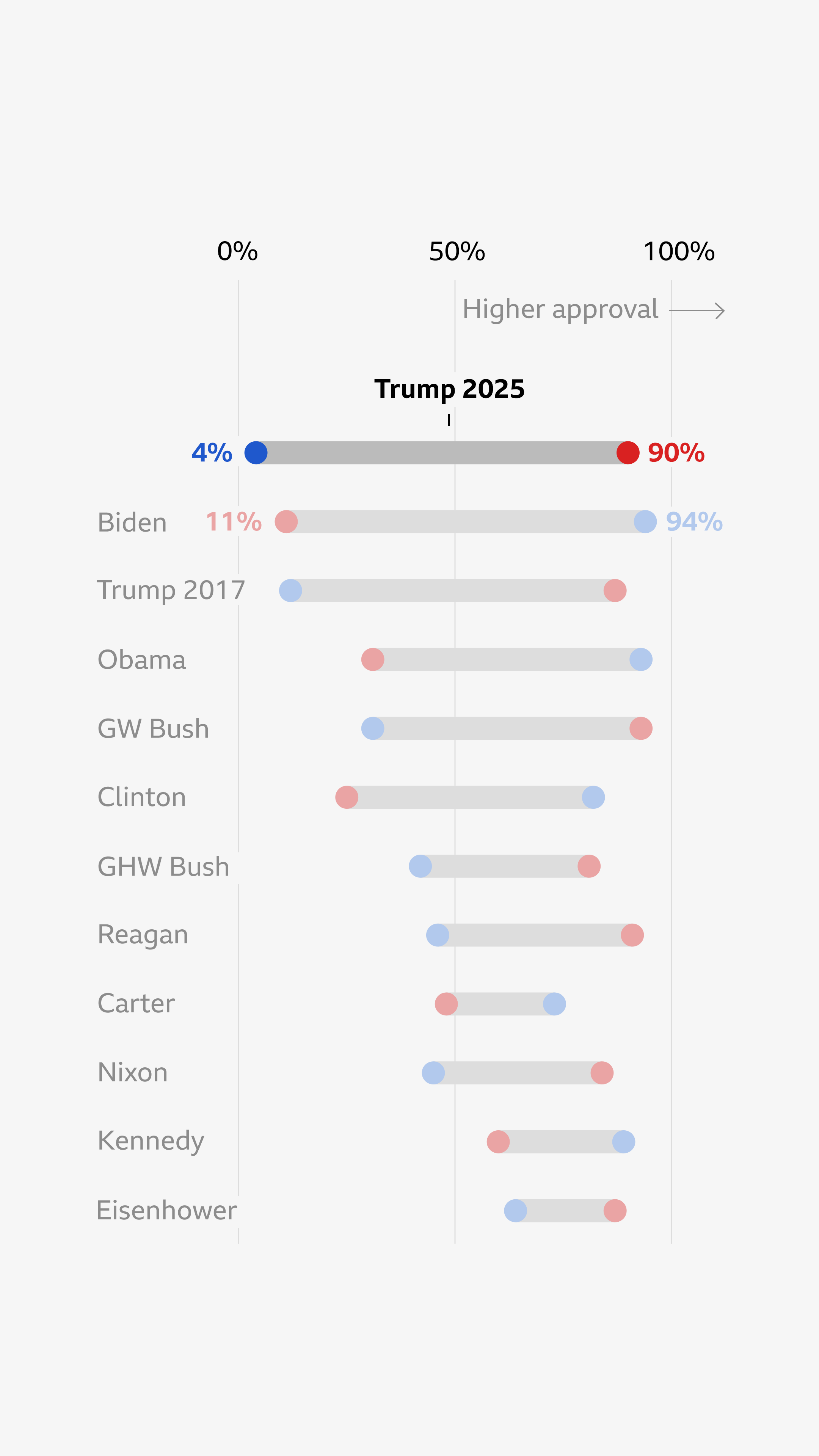On the day of his inauguration on 20 January, US President Donald Trump promised to deliver the “most extraordinary first 100 days of any presidency in American history”.
For decades, the 100-day milestone has been viewed as a symbolic test for a new president - a moment to step back and assess the progress of a new administration.
Early data from this period gives us an indication of the progress that Trump has made on his key pledges from sweeping trade tariffs, migrant arrests and deportations to drastic cuts to government spending.
Approval rating
Trump's second-term approval rating has been compared with that of his predecessors by US polling firm Gallup, which has used the 100-day milestone for decades.
Trump is the first post-war president to serve two non-consecutive terms, which is why he has two sets of ratings.
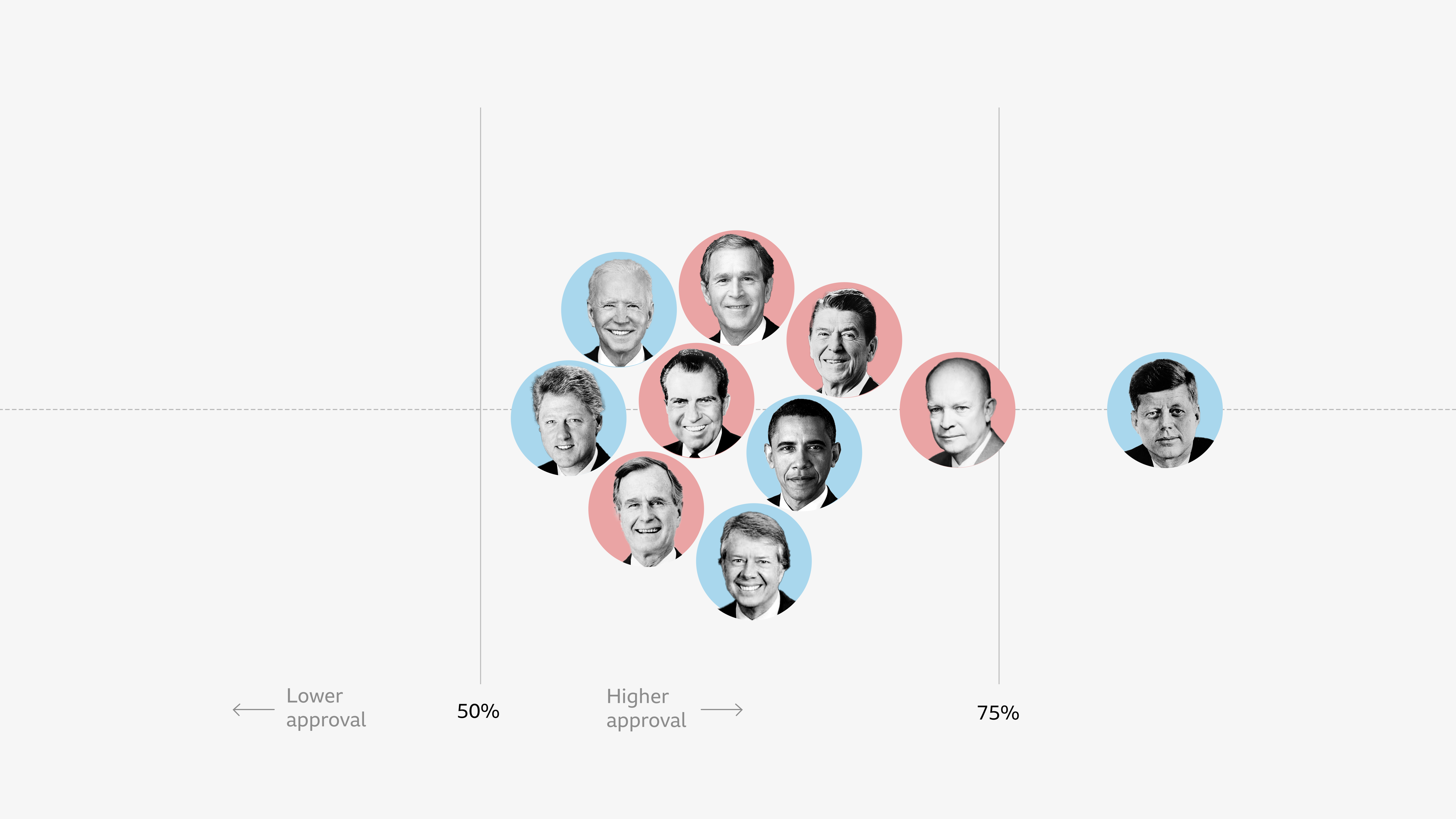
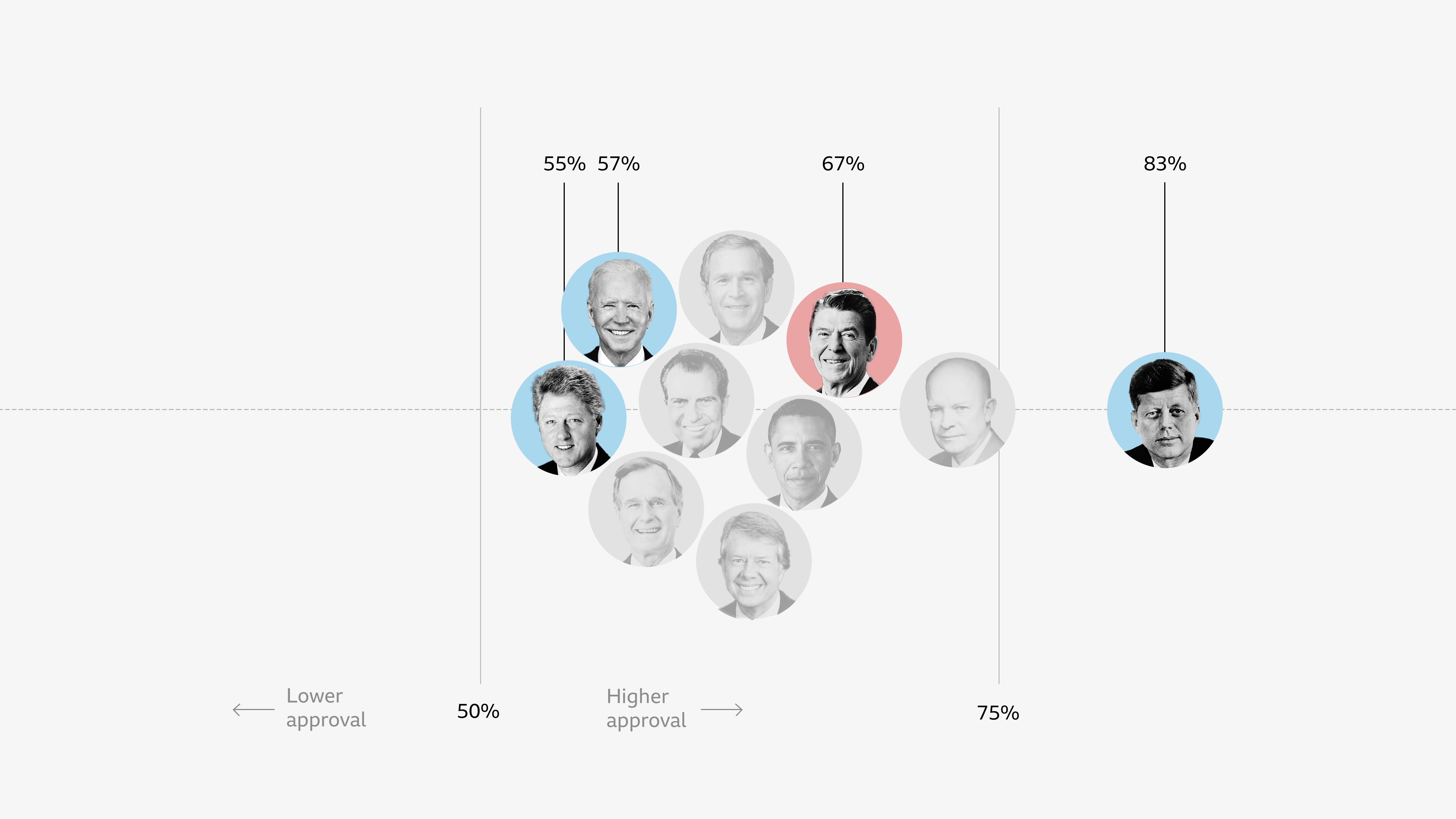
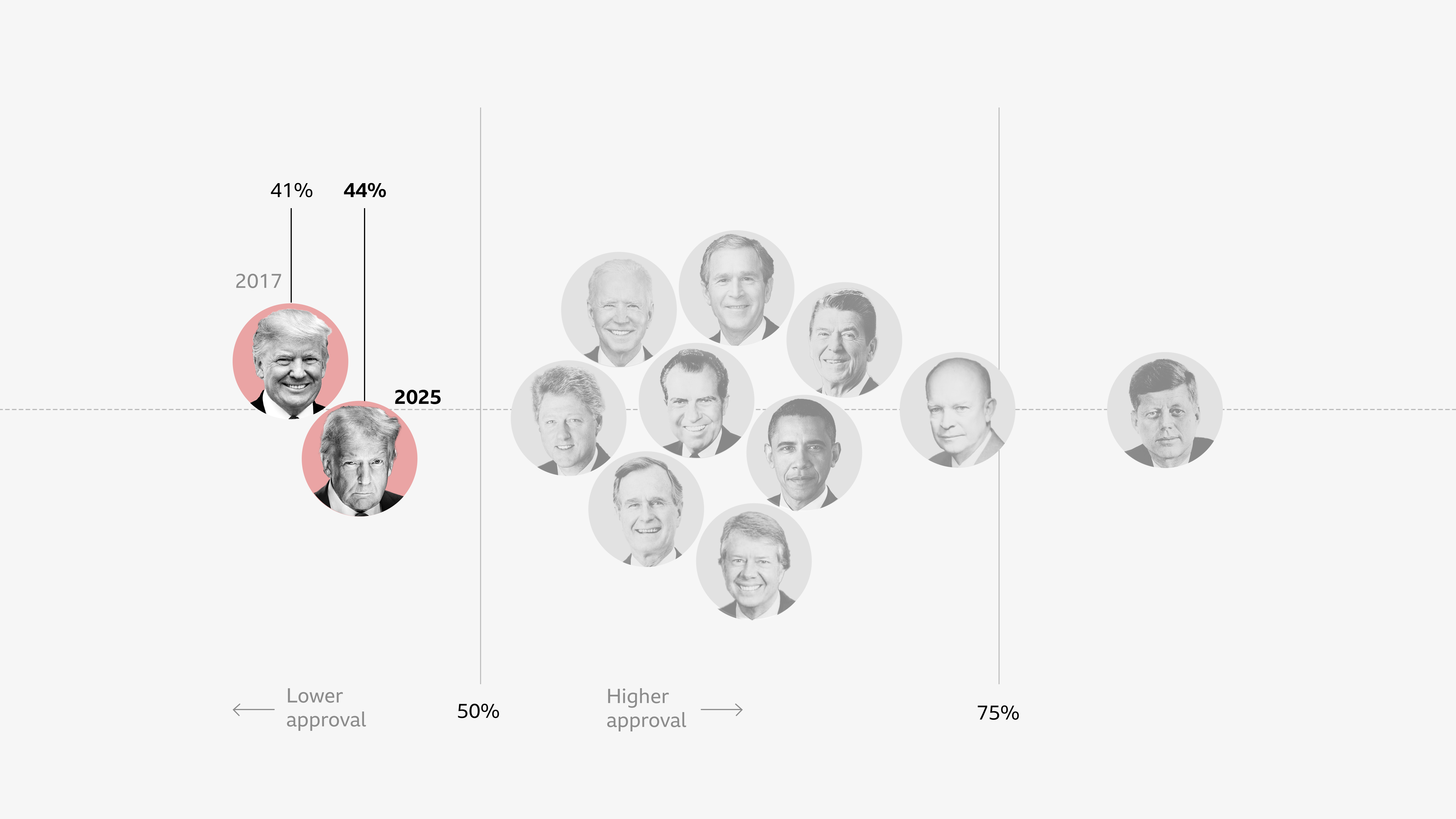
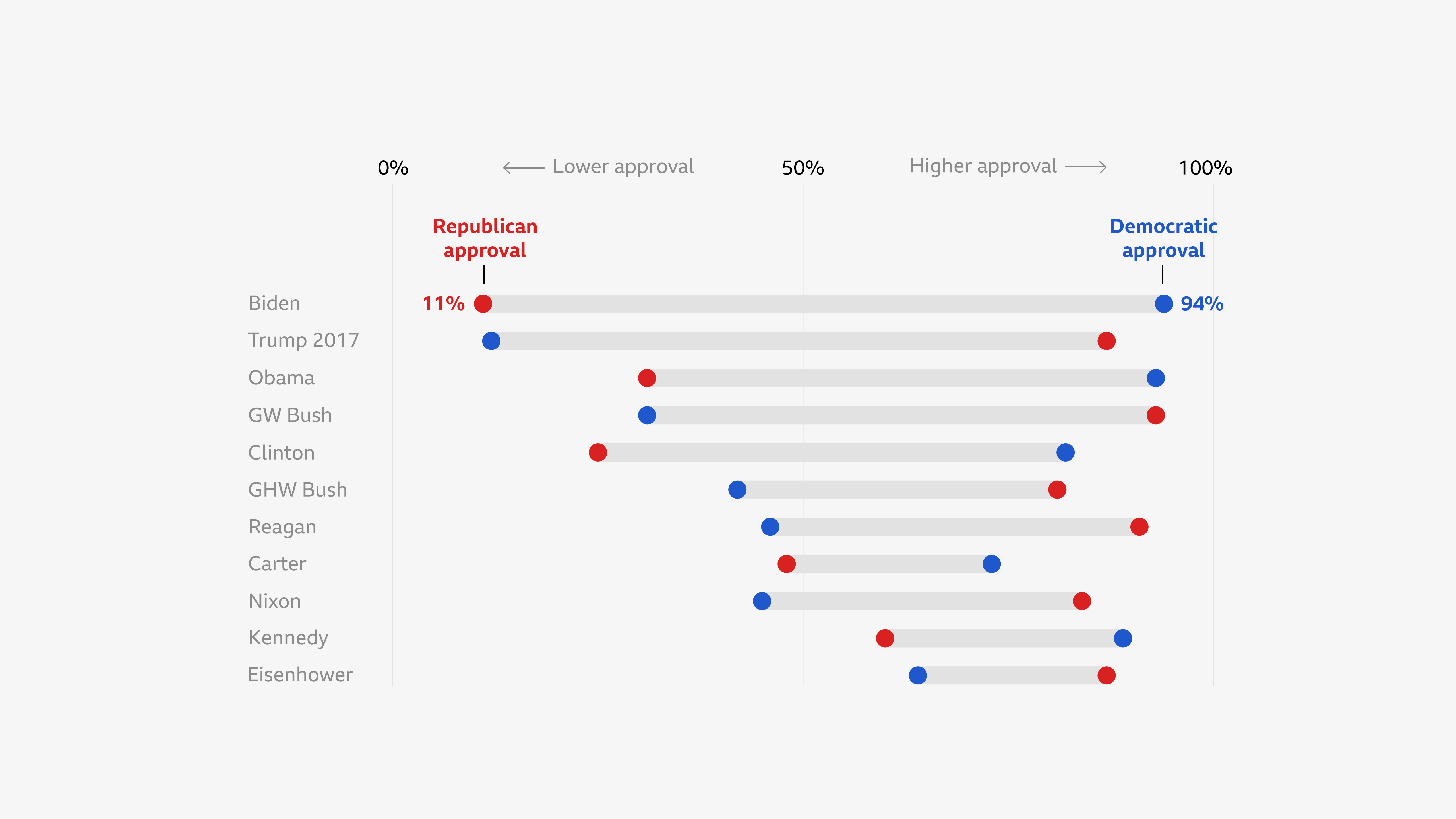
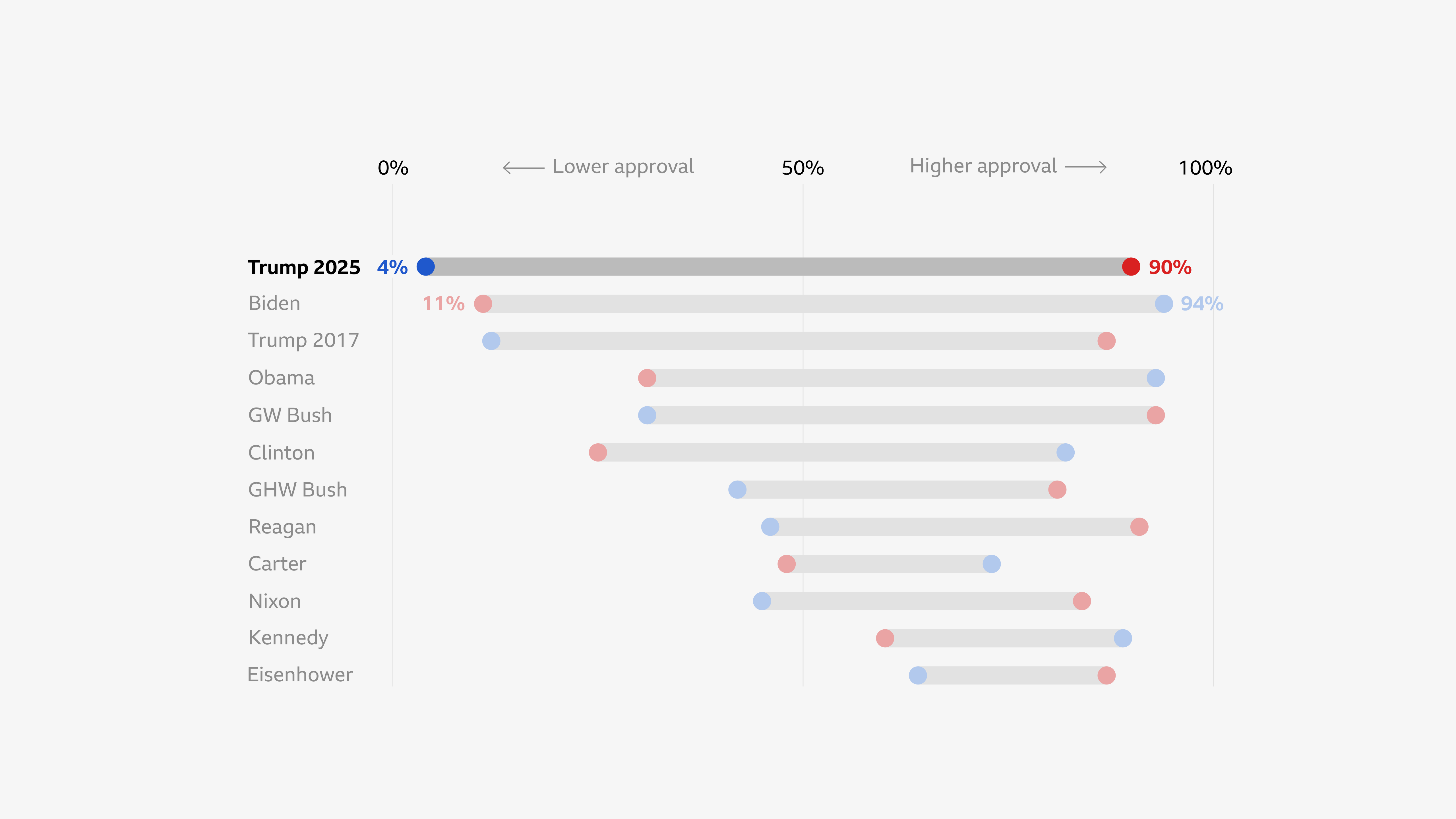
Comparable data is not available for presidents who were completing someone else’s term, such as Lyndon B Johnson, who became president in 1963 after John F Kennedy’s assassination.
Gallup’s latest approval polling was conducted from 1-14 April, during a period of market turbulence in response to Trump's trade tariffs. But the reading of 44% does not indicate an immediate change to Trump's polling, which has been stable during the first quarter of his second term. As with previous presidents, the latest polling was based on no fewer than 1,000 interviews.
A whirlwind of action
Trump pledged during his campaign to act quickly on his top issues. He vowed that on his first day he would reduce prices, end the war in Ukraine, and pardon those linked to the 2021 US Capitol riot.
He has not achieved all of those but if the sheer number of executive actions is anything to go by, Trump is the fastest-moving president of modern times - issuing a huge number of directives to the federal government that do not require the approval of Congress.
These include legally-binding executive orders. Trump has issued more executive orders in 100 days than any other president in the past century. He has already issued more than half as many as he did during his entire first term — and nearly 90% as many as Joe Biden issued over four years.
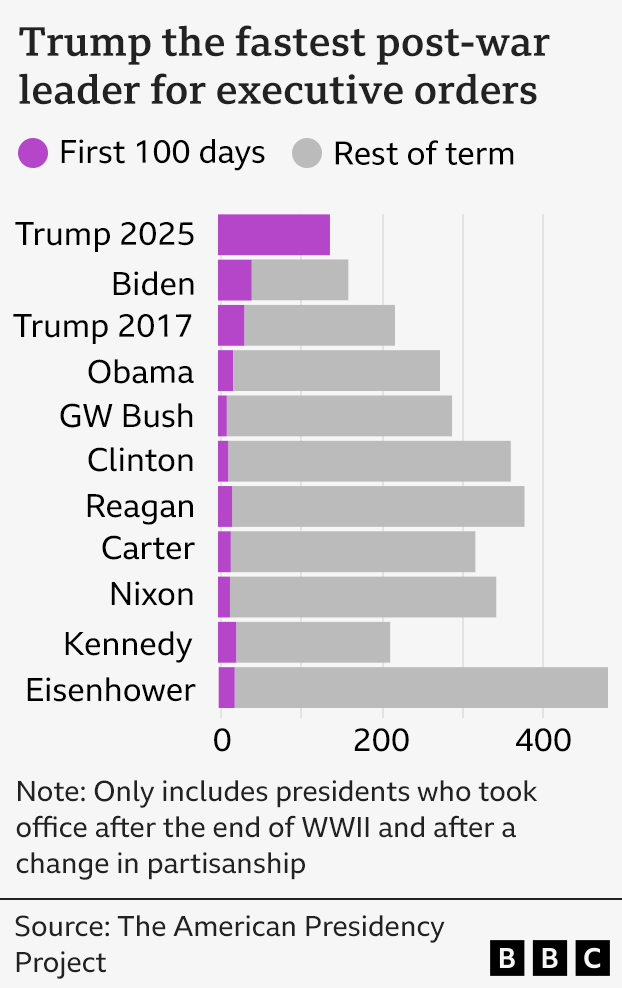
Some of Trump’s executive orders have been hugely consequential, and many have been aimed at undoing Biden’s legacy - which his supporters have cheered. Among his day-one orders, Trump decreed that the US would, once again, pull out of the UN’s Paris agreement on climate change - which he said was burdening Americans - and declared a national energy emergency to increase US oil output.
Other orders have been more mundane - such as one that ended a ban on plastic straws.
At the same time as he has utilised his executive power, Trump has shown little interest in working with Congress on new legislation. He has passed just five bills into law, which is fewer at this stage than has been achieved by any new president for 70 years, as originally reported by Punchbowl News.
Trump’s executive actions in 2025 have challenged the limits of presidential power, and he has frequently found himself on a collision course with federal judges. He has faced more than 200 legal challenges over some of these orders, according to non-partisan law journal Just Security, with judges halting his actions in many cases.
Economic performance
Trump won his decisive victory in November 2024 after pledging to cut prices and boost jobs for Americans. His pro-business message was welcomed by many on Wall Street - as reflected in a bump in US stock prices on the S&P 500 index after his election win.
US stock prices tend to gradually rise in the early stages of a presidency. But in Trump’s case, they remained stagnant and progressively declined as his rhetoric over trade tariffs intensified. They suffered a dramatic drop when he unveiled a range of these import taxes, applying worldwide, on 2 April.
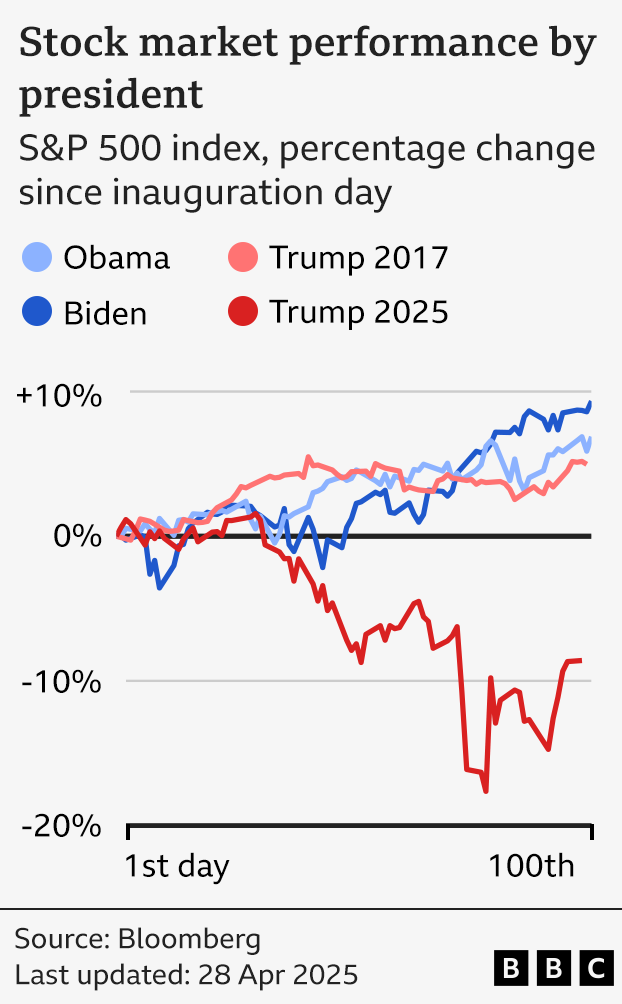
Trump rowed back on some of these tariffs a week later, causing a slight market rebound. But the uncertainty created by his sweeping efforts to remake global trade has been blamed for worldwide economic turbulence.
Another important consideration is how Americans feel about the economy. This question has been tracked for decades by the University of Michigan, which surveys hundreds of households each month for its Consumer Sentiment Index.
The score has fluctuated during recent presidential transitions. Under Trump, it has declined by a notable amount. Four consecutive monthly drops culminated in a score in April that was the index’s second-lowest ever. The all-time low came in June 2022, under the presidency of Joe Biden, and widespread pessimism about inflation after Russia’s invasion of Ukraine.
Consumers in April said they were worried about a trade war, with worsening expectations around incomes, inflation and personal finances. Trump himself has refused to rule out an economic recession but has vowed that his agenda will reap longer-term rewards.
Other aspects of economic performance are harder to assess at this stage – including inflation, which the US Federal Reserve has suggested could rise again as a result of Trump’s tariff policies.
Trade and tariffs
President Trump has justified his sweeping global tariffs by saying they will result in jobs and factories returning to American shores - and also that they will reduce America’s trade deficit. Trump sees the fact that the US imports more than it sells as other nations “ripping off” his own. He frequently singles out China, one of the top exporters to the US.
The US Census Bureau and US Bureau of Economic Analysis release monthly figures on how much the US trades in goods and services with other countries.
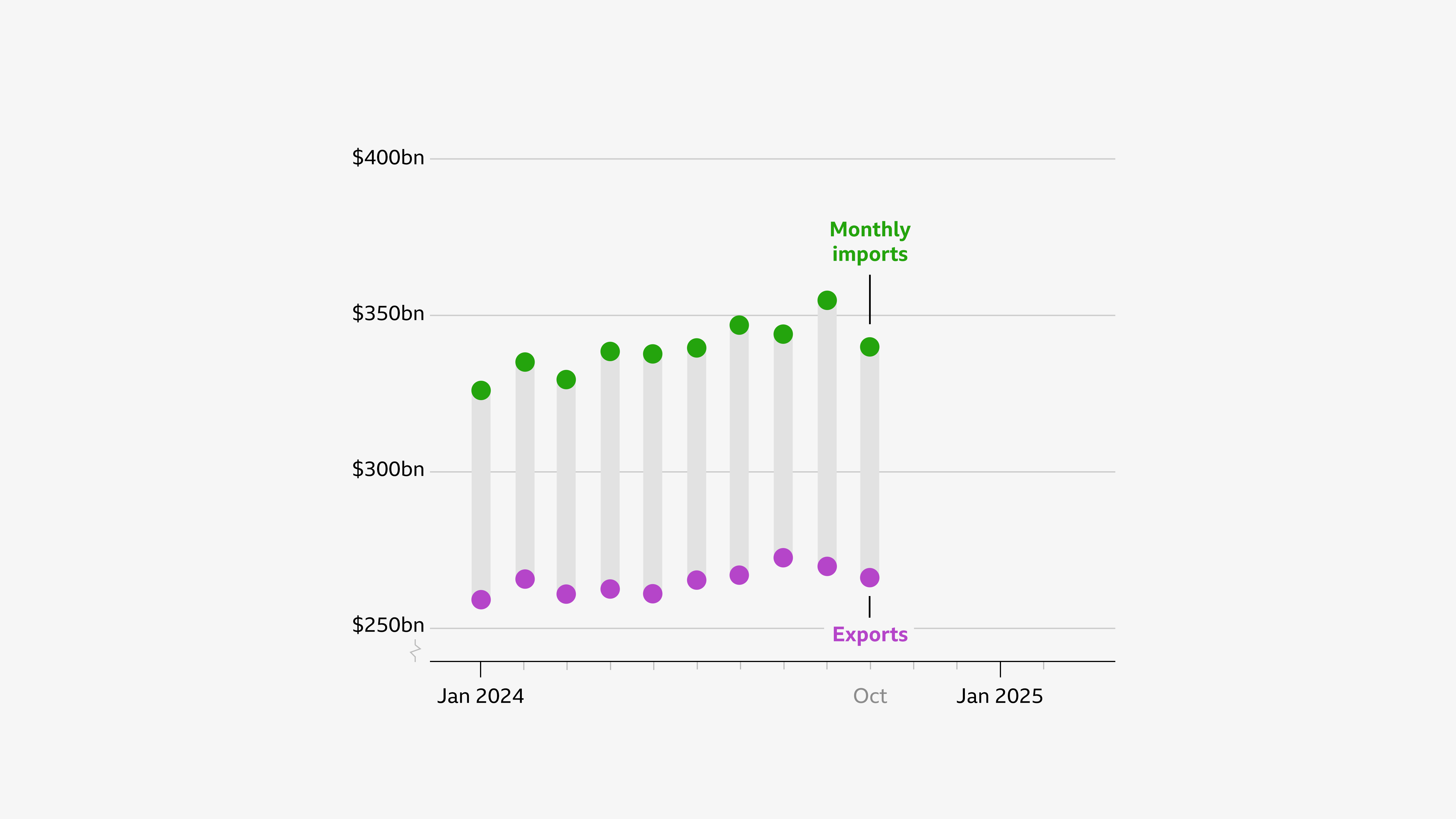
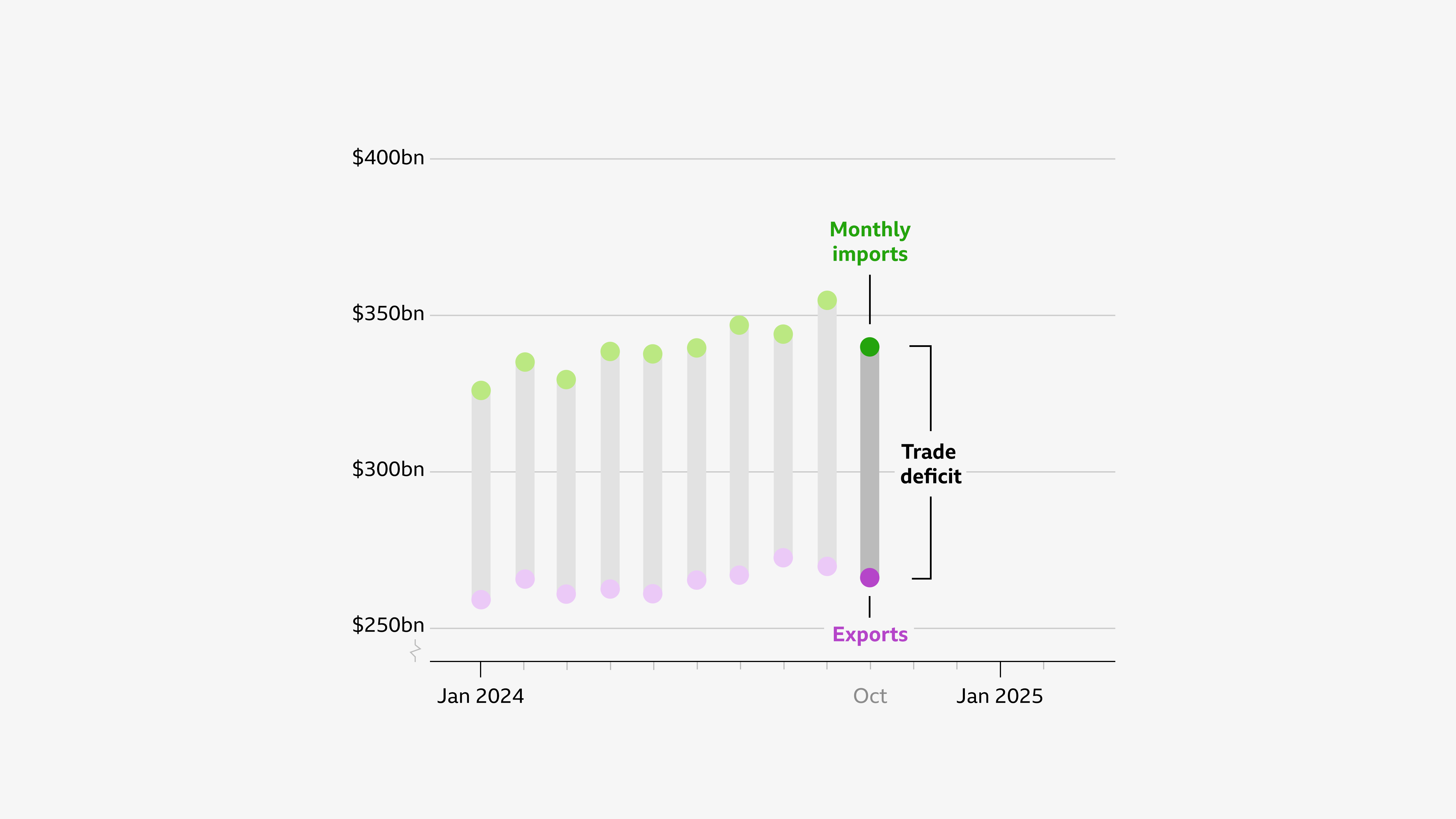

The value of goods imported to the US hit a total of $329bn in January - a record monthly figure since at least 1992, and a number that only slightly tapered in February.
Despite Trump pausing many of his most drastic tariffs in an announcement on 9 April, there have been reports of Americans stockpiling certain items, driven in part by uncertainty. High taxes remain in place on imports of Chinese products, but Trump has signalled willingness to cut these if a deal can be reached.
Moves on immigration
Trump talked tough on immigration before returning to the Oval Office, promising mass deportations of migrants who entered the US illegally and ending automatic citizenship rights that currently apply to nearly anyone born on US territory - known as "birthright citizenship".
He has so far not managed to deport as many migrants as promised, and courts have blocked his attempts to end birthright citizenship for certain children.
One measure on which the returning president can claim success is illegal US-Mexico border crossings. This is indicated by Border Patrol data on arrests - which has recently shown what the White House calls a record low. In March 2025, just over 7,000 migrants were arrested at the border - compared with more than 137,000 in March 2024, under Biden.
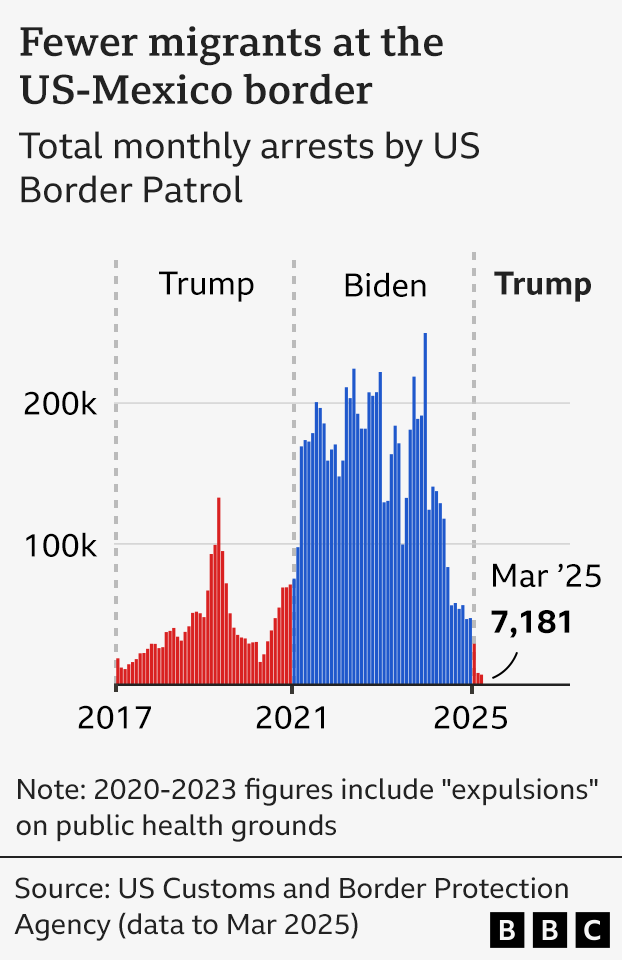
There are relatively few metrics on immigration that can be measured clearly at the 100-day mark. But Trump and his team have used the sharp drop in border arrests, plus an increase in detentions inside the country by Immigration and Customs Enforcement (ICE), to argue that they are proving successful with their efforts to deter illegal immigration and rectify Biden's "unsecured" border.
The administration has been quick to publicise raids by ICE officers - saying many of these targeted people with criminal records - and to tout what it calls unprecedented levels of cooperation with local law enforcement.
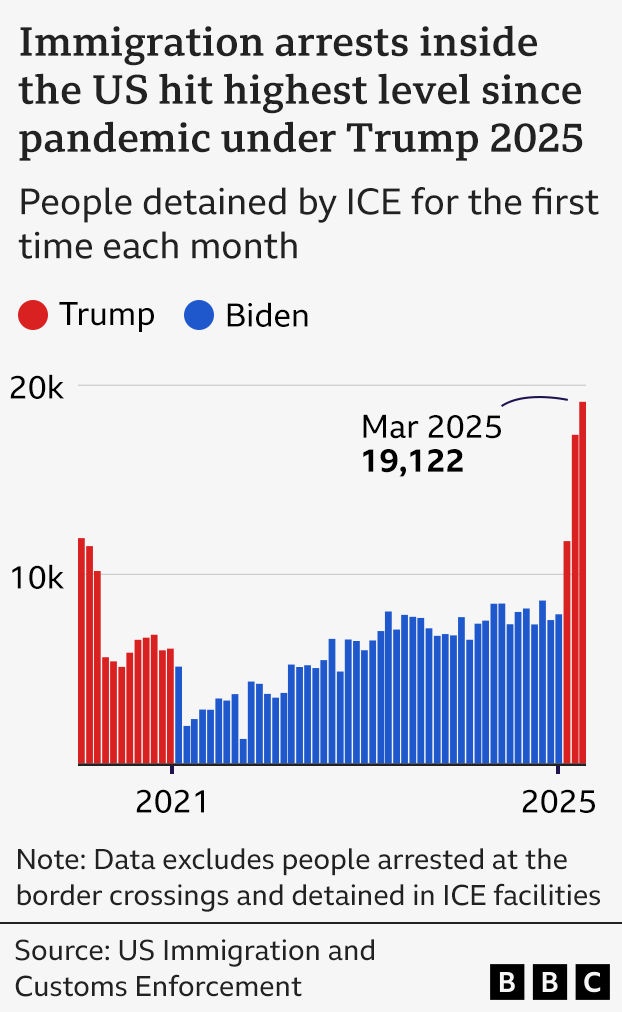
At the same time, deportations have lagged, and have faced high-profile legal challenges. If detentions continue to increase, there are warnings that ICE centres could run out of space.
As court battles loom, the future of Trump’s immigration policy will come into even sharper focus during the next 100 days.
The rest of Trump’s ambitious agenda will also be shaped by what he can achieve in the next few months.
How Americans react to his actions on the border, the trade fights that lie ahead and movements in grocery prices could determine whether Trump remains the most divisive president of the modern era.
Update 29 April: This article has been amended. An earlier version understated the level of polarisation between Republicans and Democrats for US presidents before Trump’s second term, due to an error in the data provided to the BBC by an external organisation.
Reported and produced by
Krystina Shveda and James FitzGerald
Designed by
Jess Carr and Jenny Law
Edited by
Tom Finn, David Blood and Tom Geoghegan
Additional reporting
Pilar Tomas, Tommy Lumby, Natalie Sherman, Bernd Debusmann Jr
Developed by
Shawn Hardern, Giacomo Boscaini-Gilroy and Dan Smith


